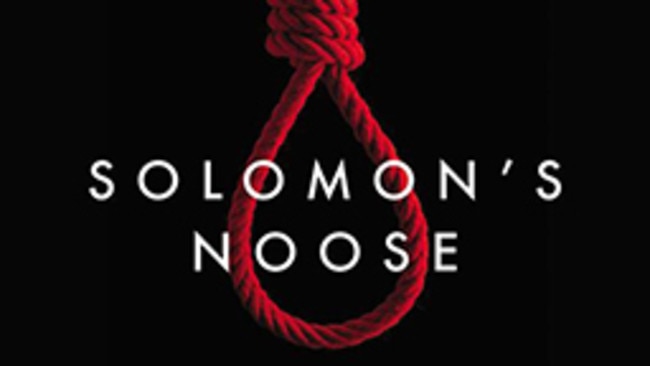Convict hangman Soloman Blay killed hundreds to save his own neck
Hobart’s convict hangman was the last person to look into the eyes of more than 200 men and women.

In the mid-19th century, of all the far-flung outposts of the British Empire none was as remote as Van Diemen’s Land. It was, for all intents and purposes, the end of the world.
It was to this distant island fortress that Solomon Bleay (better known as Blay), a 20-year-old English convict suffering from syphilis, was transported for 14 years for the crime of counterfeiting. Blay had previously been sentenced to jail for four months and 12 months respectively for stealing onions and potatoes.
Of the 70,000 felons sent to Van Diemen’s Land, only one became Her Majesty’s public executioner. On August 3, 1840, convict number 2598, Solomon Blay, was appointed ‘‘hangman of Hobart Town’’. However, it wasn’t until January 1841 that he performed his first execution, a double hanging in Launceston.
In the well-produced Solomon’s Noose, former journalist and editor Steve Harris tells the intriguing story of the British Empire’s youngest and longest-serving hangman. Sent to the island colony in 1837, he was pardoned in 1857, hanged his last criminal in 1887 and died in 1897, lonely in a rented room in North Hobart in the grip of the grog to which he became addicted.
Although another former convict, Alexander Green, had hanged 470 people in NSW, it was Blay in Van Diemen’s Land who, in dispatching 206 men and women, probably had the highest hang rate per capita in Australia, if not in the entire British Empire. Quite a boast.
The problem I have with Solomon’s Noose is how to place and describe it. Is it history, a historical novel, a fictionalised biography or a work of faction? In his author’s note, Harris writes: “Any thoughts of Solomon Blay are based on his own comments and correspondence, and suggested thoughts are interpretively drawn from the memoirs and observations of other hangmen.”
The following extract, taken from chapter three, Arrival at the End of the World, can serve as a typical example:
Blay didn’t see himself as anything unique among the latest boatload of convicts. Like so many he had rolled the dice in his impoverished life when there seemed no other choice, taking to crime in order to survive, and had been caught and banished. Blay certainly didn’t think that before too long he would need to roll the dice again, and this time it would be a choice that would stand him as unique among all the 70,000 convicts sent to Van Diemen’s Land.
My simple question is: How do we know this? In the light of this, it is unfortunate that Harris has eschewed the use of footnotes and references and the book has no index. It also seems to me peculiar that his Select Bibliography and Sources section is so selective. For example, when he deals in some detail with Aboriginal Tasmanians, Harris makes no mention of Lyndall Ryan’s crucial historical work on this important topic.
But this reviewer at least was able to exercise a willing suspension of disbelief and I soon became immersed in Harris’s captivating tale of Blay’s life and times. Throughout his long career, Blay was notorious in the colony and some of his very public hangings were witnessed by up to 1000 spectators. Indeed one of the most powerful images in Solomon’s Noose is that of a large wooden scaffold featuring the so-called “execution party”, which always included a member of the clergy “to minister words of comfort to the condemned”.
As a hangman, Blay was most likely the last person to look into the eyes of more than 200 men and women, who ranged in age from 16 to 76. He was, as Harris puts it, the final witness to “the struggle between law and order, good and evil, humankind and Mother Nature, hope and fear”. It is therefore not surprising that, supposedly, Blay often looked away and turned his back after each hanging.
Harris tellingly concludes his clearly written and usefully illustrated book by claiming, rightly it would seem, that Blay’s “choice of escaping punishment by becoming a hangman was its own life sentence”. Adopting, as a means of earning a living and of keeping out of prison, the task of hanging people by the neck until they were dead almost certainly had a considerable price.
“Every time the bells tolled to foretell a hanging, they also tolled for Blay,” Harris writes. “Every time he dropped another soul into eternity, he retreated into his own cell of self, living with his own noose of personal demons and public damnation.”
Even though its historical status is somewhat ambiguous, Solomon’s Noose is a fascinating read.
Ross Fitzgerald is emeritus professor of history and politics at Griffith University.
Solomon’s Noose: The True Story of Her Majesty’s Hangman of Hobart
By Steve Harris
Melbourne Books, 328pp, $29.95



To join the conversation, please log in. Don't have an account? Register
Join the conversation, you are commenting as Logout